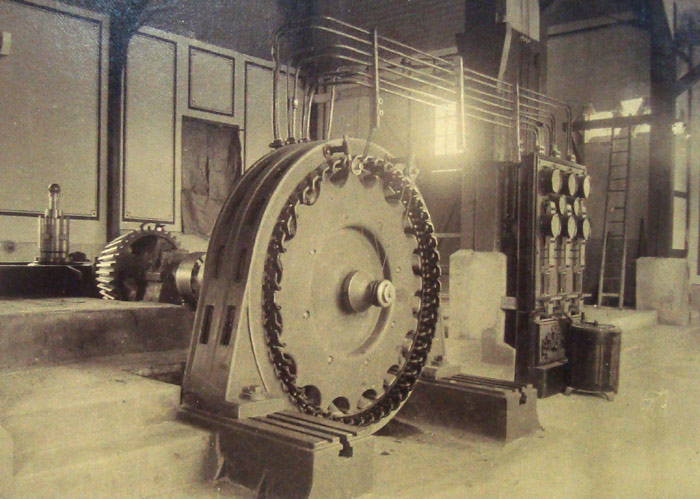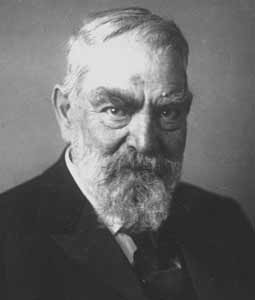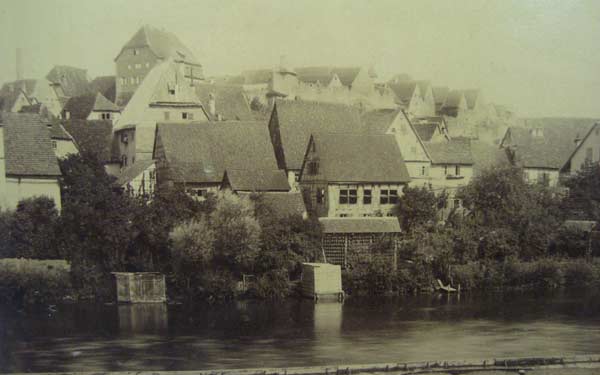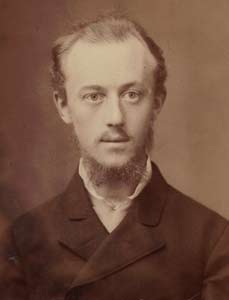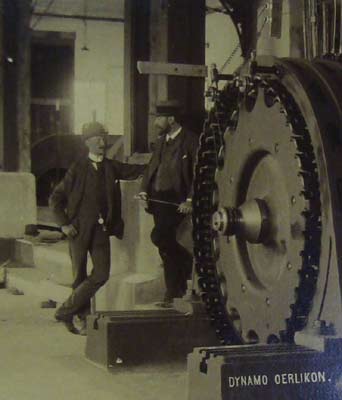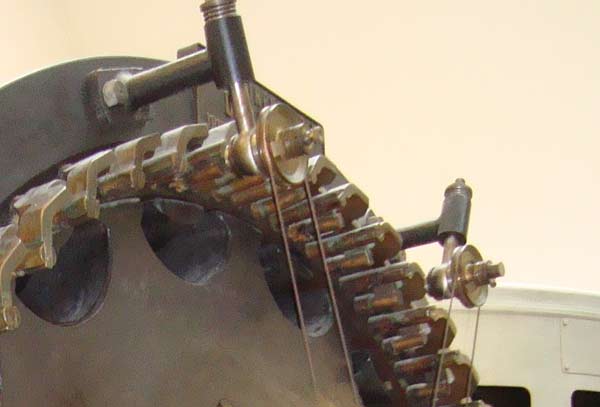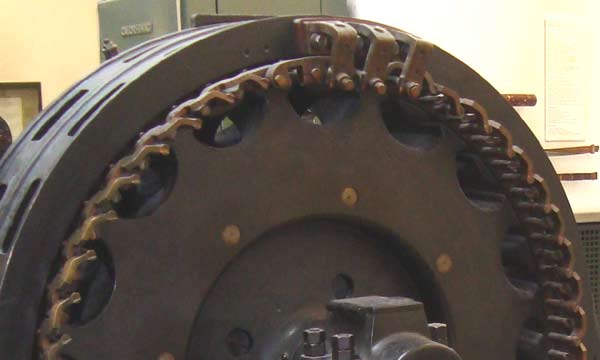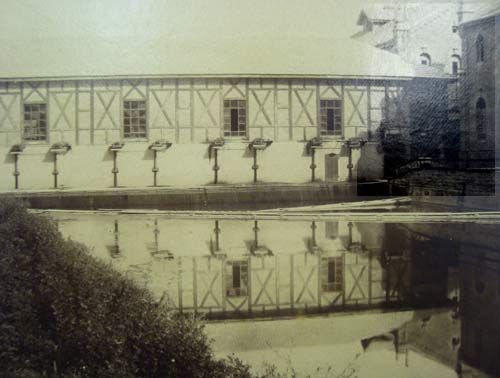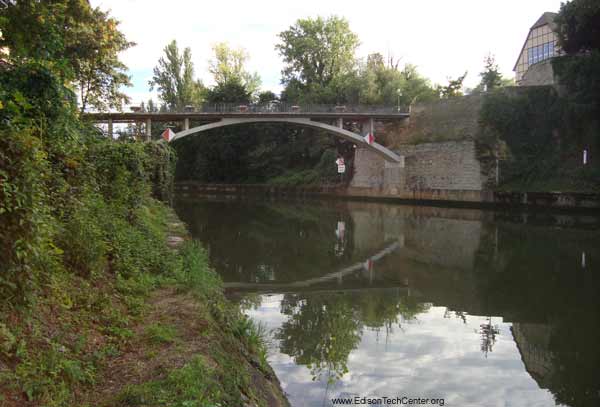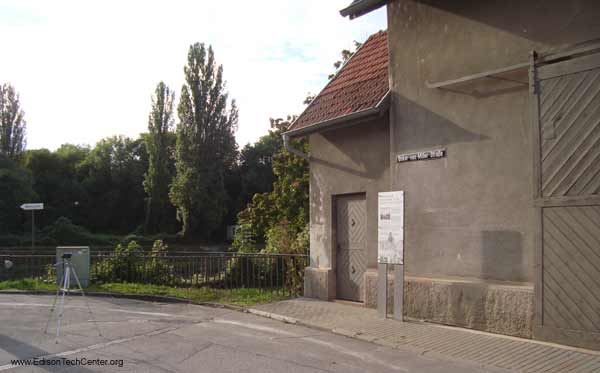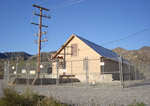
Lauffen to Frankfurt 1891
The beginning of modern electric power in the world
The three phase generator installed at Lauffen am Neckar, Germany
All historic photos provided by the Historisches Museum, Frankfurt, GermanyA Victory for AC Power:
The 1891 International Electro-Technical ExhibitionThis exposition and it's power system was one of the most important events in the early history of electricity. The exposition took place in Germany in 1891 and included a hydro power station at Lauffen, with transmission lines that extended 109 miles north to Frankfurt am Main. This was the first long distance transmission of electric power for utility. This event also demonstrated the first efficient long distance transmission system using three phase power. The demonstration of the the effectiveness of 3 phase power marked the end of the War of Currents. This event proved the superiority of Dobrovolsy's three phase system over other systems. Three phase power would prove over the next 20 years to be a better method for transmitting power than Edison's DC and Tesla's two phase systems. Read more below about this monumental event.
About this Power Generation Site:
Distinction: The first major demonstration of 3 phase AC power in the world.
Frequency: 40 Hz
Three-Phase, Alternating Current
Power Transmission Length: 109 miles
Power system built by: Oerlikon Company, Switzerland
Notable Engineers: Mikhail Dolivo-Dobrovolsky, Oskar von Miller
Maximum Power Output: 200 kVA or 180 kW provided 55 V AC, bei 150 min
20 kV was transmitted to Frankfurt
|
The Power StationIt was decided that a power station would be built at Lauffen am Neckar. This was a small village located on the banks of the Neckar River north of Stuttgart. Mikhail Dolivo-Dobrovolsky was the genius that designed the revolutionary 3 phase generator and transmission system. It should be noted that alternating current had been around for a while. Lucian Gaulard(France), John Dixon Gibbs(England), and William Stanley(USA) had worked out early AC systems that used transformers(1885) in order to create the first AC distribution systems. Elihu Thomson, Rudolph Eickmeyer and Nikola Tesla had developed the early AC motors which were necessary for industrial needs. With AC power systems now commercially salable the last major obstacle remained the issue of power transmission.
Village of Lauffen in 1891 with the Neckar River in the foreground
|
|
|

The dam and powerhouse at Lauffen
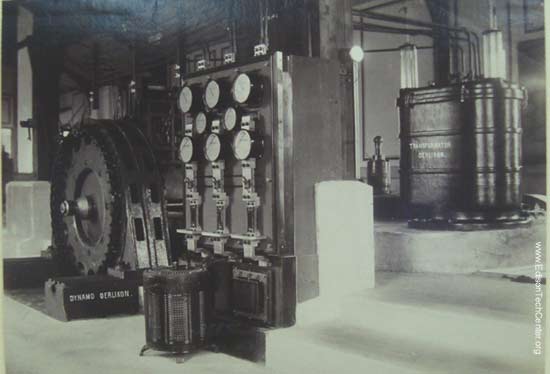
The generator, switch gear, and transformer
|
An waterfall powered by an electric pump. |
|
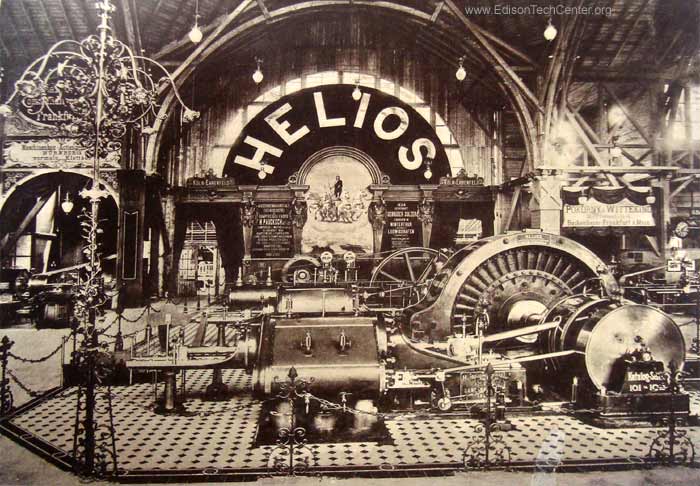
The
Helios display. Over the 6 month period 1,200,000 visitors attended
the exposition.
photos
by the Historisches Museum
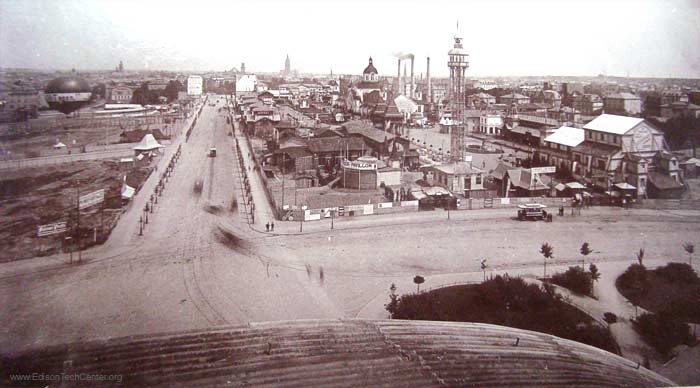
Exposition area west of city center, next to the new Haptbahnhof(main train station).

A new three phase electric motor (Drehstrommotor) by Dobrowolsky (Dobrovolsky)
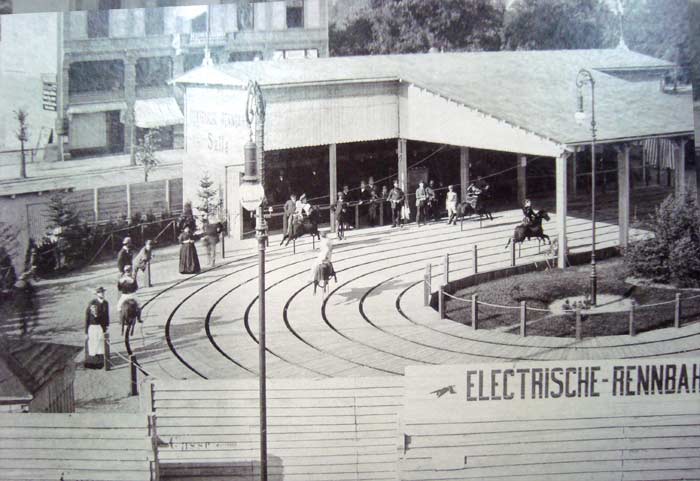
An electric horse race track (Electrische-Rennbahn)
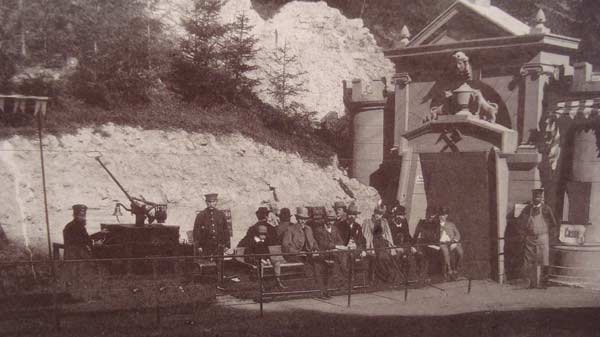
Demonstration of a electric mine locomotive. Germany had a very strong mine industry in the 19th century.
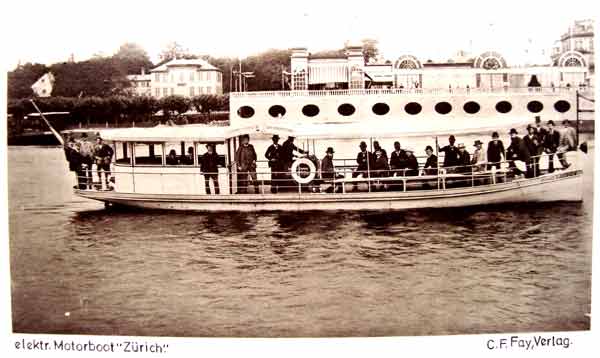
An early electric boat on the Main River which flows through Frankfurt
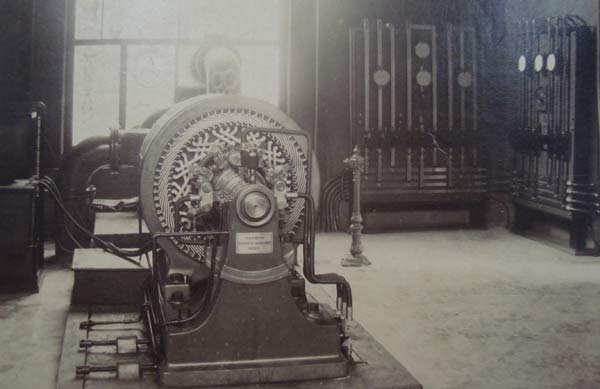
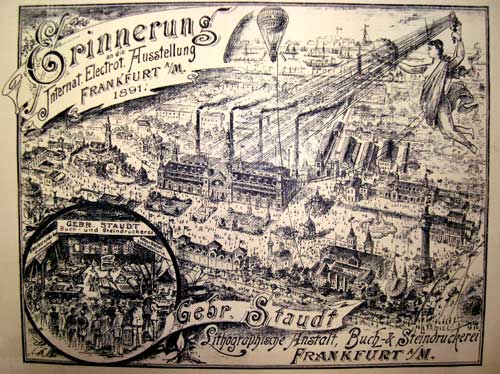
Erinnerung Internat. Electrot. Ausstellung Frankfurt A/M 1891
A "keepsake" postcard showing the electric lithography machines displayed at the event. Notice the lady proving electricity from afar.
The Generator and Site at Lauffen:
A video of the generator as it is displayed at the Deutsches Museum.
|
The Generator built by Oerlikon Company
|
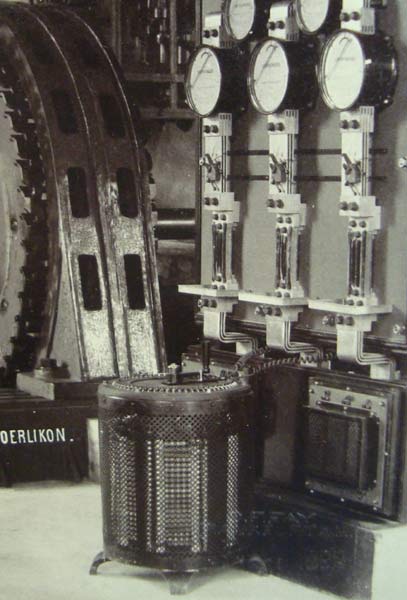 |
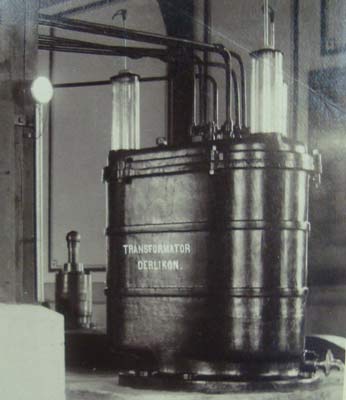 The Oerlikon Transformer |
|
Backside of the generator. See the generator in person at the Deutsches Museum in Munich
forebay and powerhouse. The powerhouse is gone today, this may have been caused by flooding or two world wars. If anyone can clarify what caused the destruction of the original powerhouse please contact us.
View of the canal today where the powerhouse once stood.
Lauffen am Neckar: A plaque commemorating the powerhouse site |
Continued
Research:
If you have anything to improve or correct on this web page please contact
the Edison Tech Center
Article by M. W. of the Edison Tech Center
Sources:
Deutsches Museum, Munich, Germany
Wikipedia: http://en.wikipedia.org/wiki/International_Electro-Technical_Exhibition_–_1891
Historisches Museum,
Frankfurt,Germany
Photos:
Historical photos provided from the archives of the Historisches
Museum, Frankfurt,Germany
Other photos were taken by the Edison Tech Center on location
Photo/Video
use:
Commercial entities must pay for use of photos/graphics/videos in their
web pages/videos/publications
No one commercial or public is allow to alter Edison Tech Center photos/graphics/videos.
Educational Use: Students and teachers may use photos and videos
for school. Graphics and photos must retain the Edison Tech Center watermark
or captions and remain unmanipulated except for sizing.
Permissions
- Videos: We do not email, FTP, or send videos/graphics to anyone
except in DVD form. Payment is needed for this service. See our donate
page for pricing, and our catalogue
for a listing of videos on DVD.
Professional video production companies may get videos in data form
with signed license agreements and payment at commercial rates.
Copyright 2013 Edison Tech Center

